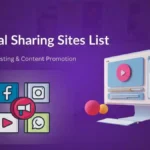According to a study, 98% of visitors do not take action the very first time they see your ad. This leaves you with two options — forget them or retarget them. Opting for the first one leaves you struggling with a lower ROI. This means you spent an X amount to grab the attention of 2 percent of your visitors, who may or may not convert.
In most cases, even with the best sales funnel, you would only be able to convert a small fraction of these 2% visitors. That sure increases your cost per acquisition and makes advertising more expensive and less productive. On the other hand, retargeting (if done the right way) can help generate more sales and increase your ROI significantly. As your target audience is limited to a particular segment, it also helps reduce your ad spend.
Does Retargeting work in 2020?
Some critics may argue that repeatedly reaching out to the same audience may prove to be futile and could even annoy them. Well, retargeting does not necessarily mean reaching out to all your customers again and again. Instead, it involves studying user behavior and reaching out only to those who show a substantial interest in your product or service.
Moreover, with the right content strategy and a powerful funnel, you can express more about your offering and redefine your brand. Nevertheless, these critics are partly correct because if you randomly retarget everyone, then it’s definitely going to annoy them. However, that does not have to be the case because things can be done differently, and that’s exactly what we are about to discuss.
Why is Retargeting important?
Social media users are no longer impulsive about making purchases, and if you wish to successfully sell your product or service, then you need to deliver value in the form of information. So, you need to reach out to them again and again, depending on their interest level and user behavior, which is only possible through a well-planned retargeting strategy.
If you run an ad campaign without one, then you could end up missing out on a large chunk of potential buyers. Also, it increases the cost per acquisition and can leave you struggling to cover up your ad costs.
Key advantages of Retargeting
- Enables sellers to reach out to a selective group based on the group’s interest levels.
- Creates more brand awareness.
- It helps reduce the CPA and increases the ROI.
- It allows you to show personalized products as pop-ups to potential buyers.
- It allows sellers to offer upsells and down sales to their audience.
- Maximizes revenues by making the campaign more cost-effective.
Now that you know what retargeting can do for your business, it is time to figure out the best ways to optimize your retargeting campaigns.
You might also like…
Inbound Marketing Hacks To Elevate Your Business Growth
Why and How To Use Emojis For Social Media Marketing
Best Digital Marketing Strategies For 2020
Tips to Optimize your Retargeting Campaigns
Most Sellers frown at the very mention of retargeting campaigns and consider them to be a waste of time and money. In most cases, that happens because of the previous mistakes of those sellers and their ad experts.
Usually, sellers tend to make the mistake of retargeting a larger group of audiences, which makes the entire process inefficient from the cost perspective. The only way out is to know how to optimize your retargeting campaigns. Below listed are five powerful strategies that can help optimize your retargeting campaigns.
1. Retarget the right audience
The success or failure of a retargeting campaign largely depends on the audience that you reach out to. If you nail down the right ones, you can generate meaningful leads, which would result in a higher return on ad spend (ROAS). Below listed are some easy to follow guidelines that can help you build the right audience.
Exclude Existing customers
If you sell products like mattresses or treadmills, then reaching out to your existing customers might not be very profitable. In fact, doing that would only increase your ad spend. On the other hand, reaching out to those who have abandoned carts would not only narrow down your audience but also maximize your ROI.
Exclude Disengaged Visitors
Platforms like Google let you dive deeper into visitor-related information. You can check details such as the time spent by every user who visited your website. You can use this to exclude disengaged viewers, which typically includes those who spent less than 15 seconds on your website. However, doing this is only recommended when you are cutting back on your ad spend.
Target High-intent Potential Buyers
Retargeting is all about reaching out to those who are likely to convert. Doing this without any physical interaction can be tricky, but there are ways to get around it. You need to dig out segments of visitors who show more interest in your products, such as those who abandoned carts without making a purchase. The fact that they added the product to the cart indicates their interest, but there could be some confusion or affordability issues. So, if you have a slow-moving stock and wish to run discounts, then this is the best segment to reach out to.
2. Competitor Research
When it comes to online ad campaigns, there’s no point in reinventing the wheel. All you need is the right tool to analyze what’s working for your competitors and design your campaigns accordingly. Tools like PowerAdSpy lets you check out the best-performing ad campaigns, high-conversion ad copies, landing pages, and the bestselling products of your competitors. Such data is priceless when it comes to planning a successful retargeting campaign. However, picking the right tool is critical for competitor research.
How to choose the right Ad Intelligence tool?
Your ad intelligence tool plays a pivotal role in the success of your retargeting campaign, and therefore you need to choose one that offers the following functions:
- It provides data for the regions you currently target or wish to expand to.
- It allows you to dig into your competitors’ most profitable ad campaigns.
- It allows you to uncover campaign-wise targeting information of your competitors.
- Must let you scrutinize the most successful landing pages of your competitors.
- Must reveal the best-selling products in your niche to help you create product-based campaigns.
The tool that lets you do all of the above helps you to give a head start in your social media campaigns. By letting you know what’s already working for others in your niche, it eliminates the need for extensive research and testing.
3. High Converting Funnel
In retargeting campaigns, you reach out to an audience that has already visited your website or landing page. So, you have already struck a chord with them, but do they remember your ad, website, landing page, or even your brand’s name? People see multiple ads on social media but do not remember all of them, and if you wish to be different, then you must take them on a memorable journey, which is only possible through a well-planned sales funnel.
Your funnel must clearly convey your message to your retargeted audience, without appearing snoopy or intrusive. Days are gone when you could count on impulse purchasing on social media. The present-day audience takes time and needs that gentle nudge, and that is precisely what your sales funnel must be designed to do.
4. Budget Your Campaign
As a matter of fact, retargeting is much easier for established companies that have a large customer database whom they can reach out to. Since their targeted audiences are already familiar with the brand and the product or service, chances of conversions are higher. For the rest, things become much easier once you start thinking like a customer and analyze user behavior to narrow down your audiences.
Once you do that, retargeting campaigns can be extremely profitable because you definitely have better control over your ad spend. That’s because you have a clearer picture of user behavior and can segment the users on that basis. You can then target only those users that are most likely to convert and dedicate your ad spend towards reaching out to those audiences. Let us now discuss some ways in which you can lower the costs of your retargeting campaign.
Exclude yourself
When you define an ad set for your retargeting campaign, make it a point to exclude your IP because that’s how ad network algorithms identify users. Unless you do that, both you and your colleagues may end up seeing the ads more often, which would result in higher ad spend.
Test Ads
With all the data you can collect from your tool, you definitely get a head start in your retargeting campaign, but you still need to run split tests. That provides you with useful insights about the performance of your ads, which lets you divert your ad spend towards the top-performing ads. By eliminating the underperforming ad sets, you have better control over your ad spend.
Evaluate CTAs
CTAs play a critical role in the success of an ad set and tell you how your target audiences are responding. So, while running split tests, make it a point to use different CTAs, and subsequently evaluate their performance.
5. Retargeting Emails
Ever wondered how Amazon sent you that email about a product you frequently browsed? Welcome to the world of email retargeting, a simple and automated tactic that can increase conversions significantly. Automated retargeting tools let you set the frequency of retargeting emails and remind a certain group of visitors to take action. It is a great way to reach out to visitors and give them a gentle nudge about something they were previously interested in. Most Digital Marketers claim that sending retargeting emails after a week of cart abandonment is found to be the most profitable.
When should I use Email Retargeting?
Email retargeting campaigns are useful in curbing cart abandonment. Also, if you have a lot of people visiting your website but bouncing off without taking the desired action, then you can grab their attention by reaching out to them through retargeting email campaigns. You can also use this strategy when your warehousing costs are going up, and you need to quickly increase sales. If that happens, then retargeting previously interested users with a discount offer that can get you some quick sales.
Final Takeaway
By using the right tools and techniques, businesses can generate more meaningful leads, which results in higher conversions and lower costs. It also helps you save the time and effort that goes into creating ad campaigns from scratch. The above-mentioned techniques are some of the most powerful ones when it comes to optimizing retargeting campaigns. As you may have realized, retargeting ad campaigns are all about segmentation and strategy. So, it is very important that you make use of the right tools to do your research and reach out to a narrower audience.










